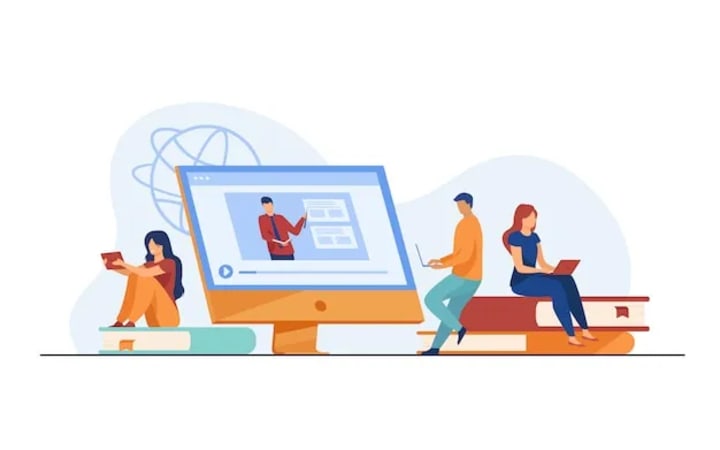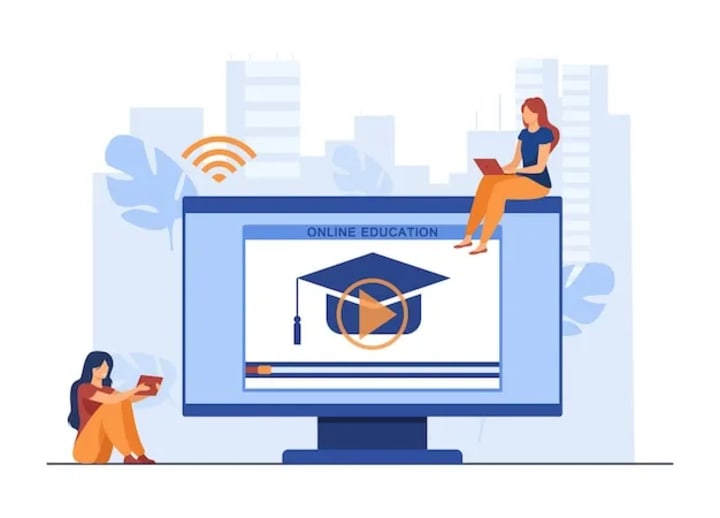
Creating a custom eLearning program tailored to your organization’s needs can significantly enhance the effectiveness of training and development initiatives. A well-designed eLearning program can address specific learning objectives, accommodate various learning styles, and improve overall learner engagement and retention. Here’s a comprehensive guide to help you create a successful custom eLearning program.

Step 1: Define Learning Objectives and Goals
The first step in creating a custom eLearning program is to clearly define your learning objectives and goals. This foundational step ensures that your program is aligned with the desired outcomes and provides a clear direction for content development.
- Identify Training Needs: Conduct a needs analysis to determine the skills, knowledge, and behaviors that need improvement.
- Set Specific Goals: Establish specific, measurable, achievable, relevant, and time-bound (SMART) goals for the eLearning program.
- Align with Organizational Objectives: Ensure that the learning objectives support the broader goals of your organization.
Step 2: Analyze Your Audience
Understanding your target audience is crucial for designing an effective eLearning program. This involves analyzing the learners’ demographics, preferences, and learning styles.
- Demographic Analysis: Gather information on the age, gender, educational background, and job roles of your learners.
- Learning Preferences: Identify the preferred learning methods, such as visual, auditory, or kinesthetic.
- Skill Levels: Assess the current skill levels and knowledge base of your learners to tailor the content accordingly.
Step 3: Design the eLearning Curriculum
With clear objectives and an understanding of your audience, you can begin designing the eLearning curriculum. This involves structuring the content and planning the instructional strategies.
- Course Outline: Create a detailed course outline that breaks down the content into manageable modules or lessons.
- Instructional Design Models: Use instructional design models like ADDIE (Analysis, Design, Development, Implementation, Evaluation) or SAM (Successive Approximation Model) to guide the design process.
- Engagement Strategies: Incorporate interactive elements, such as quizzes, discussions, and simulations, to keep learners engaged.

Step 4: Develop Content and Materials
Once the curriculum is designed, the next step is to develop the content and materials for the eLearning program. This includes creating text, graphics, videos, and interactive elements.
- Content Creation: Develop high-quality content that is clear, concise, and relevant to the learning objectives.
- Multimedia Elements: Integrate multimedia elements like videos, animations, and audio to enhance the learning experience.
- Interactive Components: Build interactive components such as quizzes, simulations, and scenarios to reinforce learning.
Step 5: Choose the Right eLearning Platform
Selecting the appropriate eLearning platform or Learning Management System (LMS) is crucial for delivering and managing your custom eLearning program.
- Platform Features: Look for features such as course management, progress tracking, assessment tools, and reporting capabilities.
- User Experience: Ensure the platform provides a user-friendly experience for both learners and administrators.
- Scalability: Choose a platform that can scale to accommodate future growth and additional courses.
Step 6: Implement and Launch the Program
With the content and platform ready, it’s time to implement and launch the eLearning program.
- Pilot Testing: Conduct a pilot test with a small group of learners to identify any issues and gather feedback.
- Train Instructors and Facilitators: Provide training for instructors and facilitators on how to use the platform and deliver the content effectively.
- Launch the Program: Roll out the eLearning program to all intended learners and ensure they have access to the necessary resources and support.
Step 7: Monitor and Evaluate
After launching the eLearning program, continuous monitoring and evaluation are essential to measure its effectiveness and make necessary improvements.
- Tracking Progress: Use the LMS to track learner progress and completion rates.
- Gather Feedback: Collect feedback from learners through surveys and discussions to understand their experiences and identify areas for improvement.
- Evaluate Outcomes: Assess whether the learning objectives and goals are being met and analyze the impact on performance and productivity.
Step 8: Make Continuous Improvements
Based on the evaluation, make ongoing improvements to the eLearning program to ensure it remains effective and relevant.
- Update Content: Regularly update the content to reflect changes in industry standards, organizational goals, or learner needs.
- Enhance Interactivity: Incorporate new interactive elements and technologies to keep the learning experience engaging.
- Address Feedback: Act on the feedback received from learners to improve the overall quality and effectiveness of the program.

Conclusion
Creating a custom eLearning program involves a systematic approach to design, development, and implementation. By following these steps, you can create an engaging and effective eLearning program tailored to your organization’s unique needs and goals. Continuous monitoring and improvement will ensure that the program remains relevant and provides lasting value to learners.
About the Creator
Enjoyed the story? Support the Creator.
Subscribe for free to receive all their stories in your feed. You could also pledge your support or give them a one-off tip, letting them know you appreciate their work.





Comments
There are no comments for this story
Be the first to respond and start the conversation.